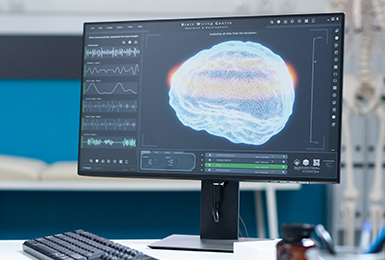The most reliable doctors in Mexico
Endoscopic pituitary surgery; work experience at the Naval Hospital, Mexico City
Background: The pituitary adenomas arise primarily from the adenohypophysis, and they are classified most commonly by endocrine function and histological staining methods. The pituitary tumors represent approximately 10% of the intracranial tumors. Here a few surgical techniques are described: transcranial (craniotomy), transsphenoidal and endoscopic approaches; sometimes the neurosurgeon uses a combination of these approaches to achieve a complete resection.

Purpose: The purpose of our study was to determine the risk factors associated with using the endoscopic approach. We analyzed our learning curve with the following variables: time of surgery, resection and bleeding.
Material & Methods: All the patients with a pituitary adenoma who had the indication for an endoscopic approach were included, from 2011 to 2017. All the surgeries were performed with the endonasal endoscopic technique and stereotactic navigation.
Results of the study

47 patients underwent an endoscopic surgery guided with stereotactic navigation, the age range started from 10 to 85 years, in the case of the gender in this cohort we had 28 feminine and 19 masculine patients; 38 patients had a non-functional tumor, 5 secrete prolactin, 3 secrete growth hormone, and 1 secrete gonadotropins. One patient had amaurosis, 29 presented bitemporal hemianopsia. In this cohort study, 15 patients underwent previous treatment like surgery, medical treatment and/ or radiotherapy.
The follow up was performed in a multidisciplinary format and with MRI at 3, 6 and 12 months. We got 32 patients with a complete resection and 2 presented biochemical cure, 25 had visual improvement. Five patients required permanent hormonal therapy. We had 6 complications: one death, one hemianopsia, one Weber syndrome and 3 CSF leaks. In 83% of our patients bleeding was less than 200 milliliters. We performed a Chi-squared test and the relation between complications and previous treatment was statistically significant with a p-value0.05.
Conclusion
We demonstrated a clinical significance association between previous treatment and pituitary surgery, these treatments could be transsphenoidal and endoscopic approaches, craniotomy, medical treatment and radiotherapy or radiosurgery. Previous treatments do not matter; always the neurosurgeon is aware because this pathology sometimes requires multiple therapies. The stereotactic navigation is a useful tool for avoiding complications in this kind of surgeries.

See our product recomendations in our store.
As Amazon affiliates, some purchases may earn us a commission.
| Other locations |
|---|
| Guadalajara |
| México City |
| Oaxaca |
| Tijuana |


